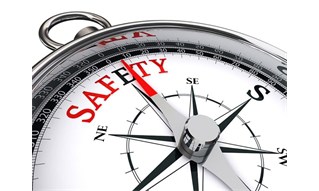
This month, I
want to draw your attention to Rule number 5 of the Convention on the International Regulations for Preventing Collisions at Sea, 1972 (IRPCS) and
recently revised in 2018. These COLREGs are maintained by the International Maritime Organization and applies to every ship on the sea, from the largest container ship to the
smallest pleasure craft.
What are COLREGs?
The COLREGs as they are known, are in effect, the Highway Code of
the sea. The rules were introduced to ensure all vessels navigating at sea knew
their obligations when it came to preventing collisions.
One of the
biggest misconceptions about the COLREGs is they are a guidance document,
something to help skippers understand who has ‘right of way’ in potential
collision situations. This is not the case. They are the law and you are
required to follow them. If an incident
occurs and you have chosen not to follow them or are not aware of them, you leave
yourself open to prosecution.
Specifically, Rule 5 stipulates that,
Every vessel shall at all times maintain a proper look-out by sight and hearing
as well as by all available means appropriate in the prevailing circumstances
and conditions so as to make a full appraisal of the situation and of the risk
of collision.
This is
important in Cowes due to the high volume and density of all vessel traffic
that uses the Harbour. This rule also
extends into the Solent where the vessel traffic can be very similar.
Exploring the Rule in
More Detail
Maintaining a proper look-out at all times is an important part
of safe watchkeeping. The lookout should
be stationed in the most suitable place on the vessel to enable them to see and
hear properly.
All available means appropriate
The term ‘proper look-out’ includes the effective use of
available equipment (e.g. AIS or VHF), in addition to the use of both sight and
hearing. Involving both sight and sound,
this should include a full 360° scope. Radar is an effective lookout
tool, especially at night but does not replace any other means.
Anchor watch
The duty to keep a proper look-out applies also when a vessel is
at anchor, especially if there is a strong tide running, or high traffic areas. Actions can still be taken aboard a vessel at
anchor to avoid a collision, however they can’t be taken if a look out is not
being kept.
Night-time considerations
When navigating
at night, it is vital to preserve night vision and not be dazzled by your own
ship’s instrument or navigation lights, so these should be dimmed accordingly. Lookouts should familiarise themselves with Part
C of the IRPCS in order to be able to identify other vessels and objects from their light characteristics. This will also always involve an appraisal of
course and aspect which would be used for collision avoidance.
For further information and help to familiarise yourself with Rule 5 and the
rest of COLREGs, please follow the links below.
Royal Yachting Association – Rules of the Road
Royal Yachting Association – Understanding COLREGs
Royal Yachting Association – Understanding COLREGs 2
CHC – Collision Regulations
CHC – Rules of the Road



